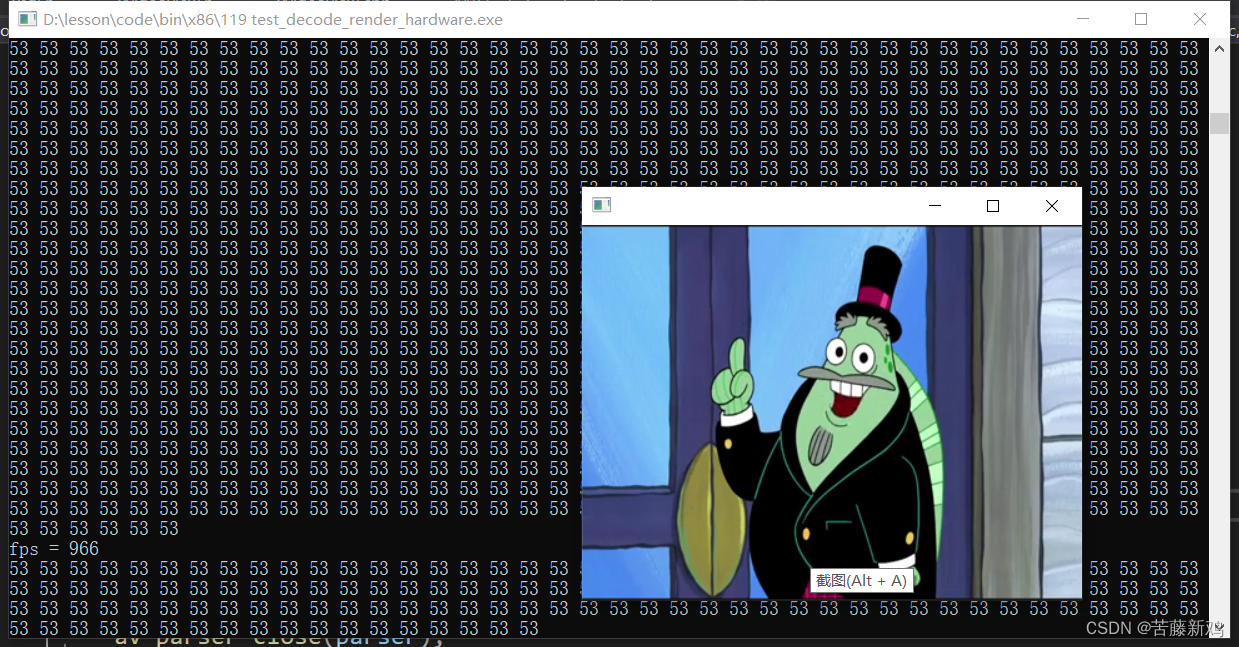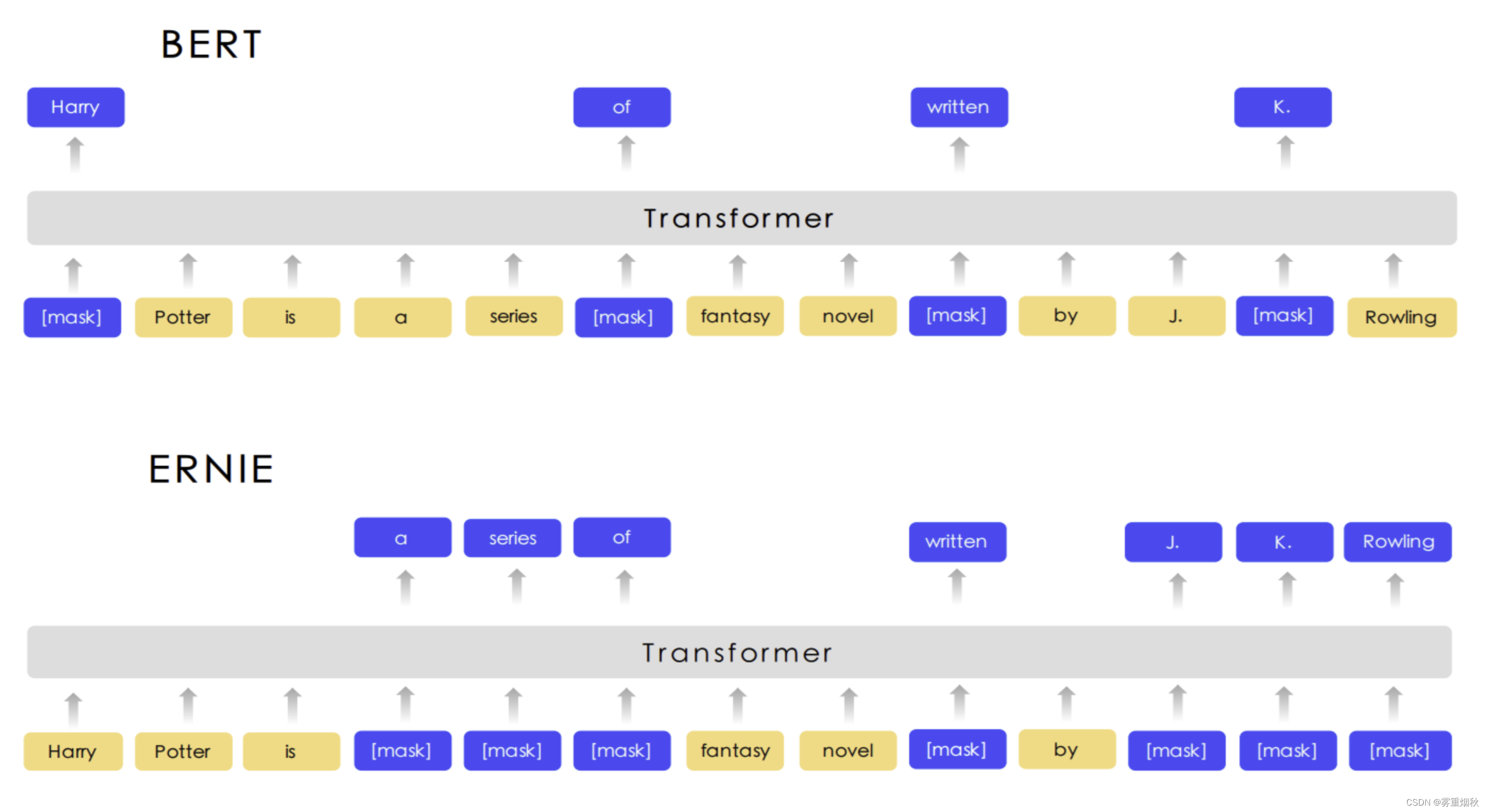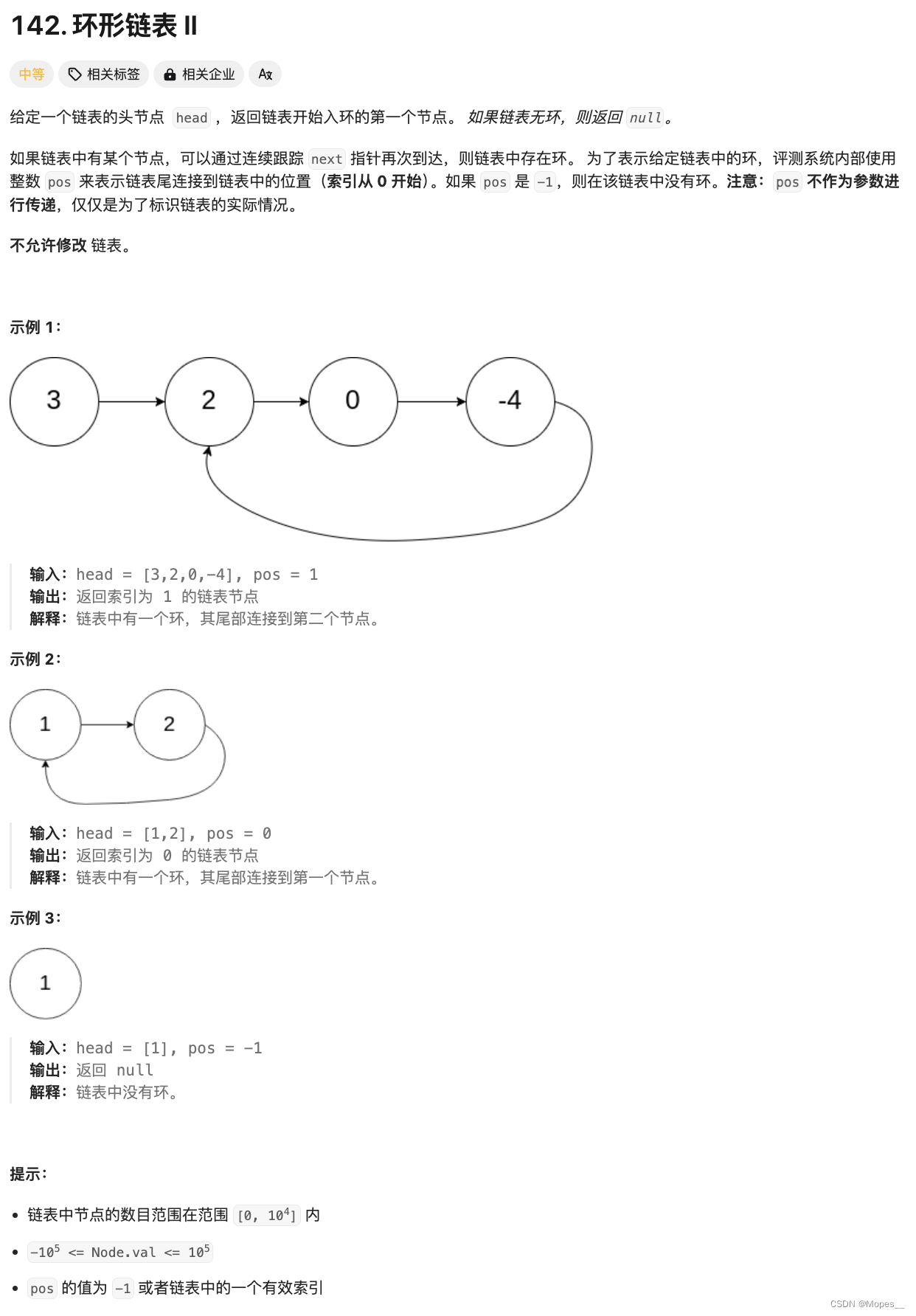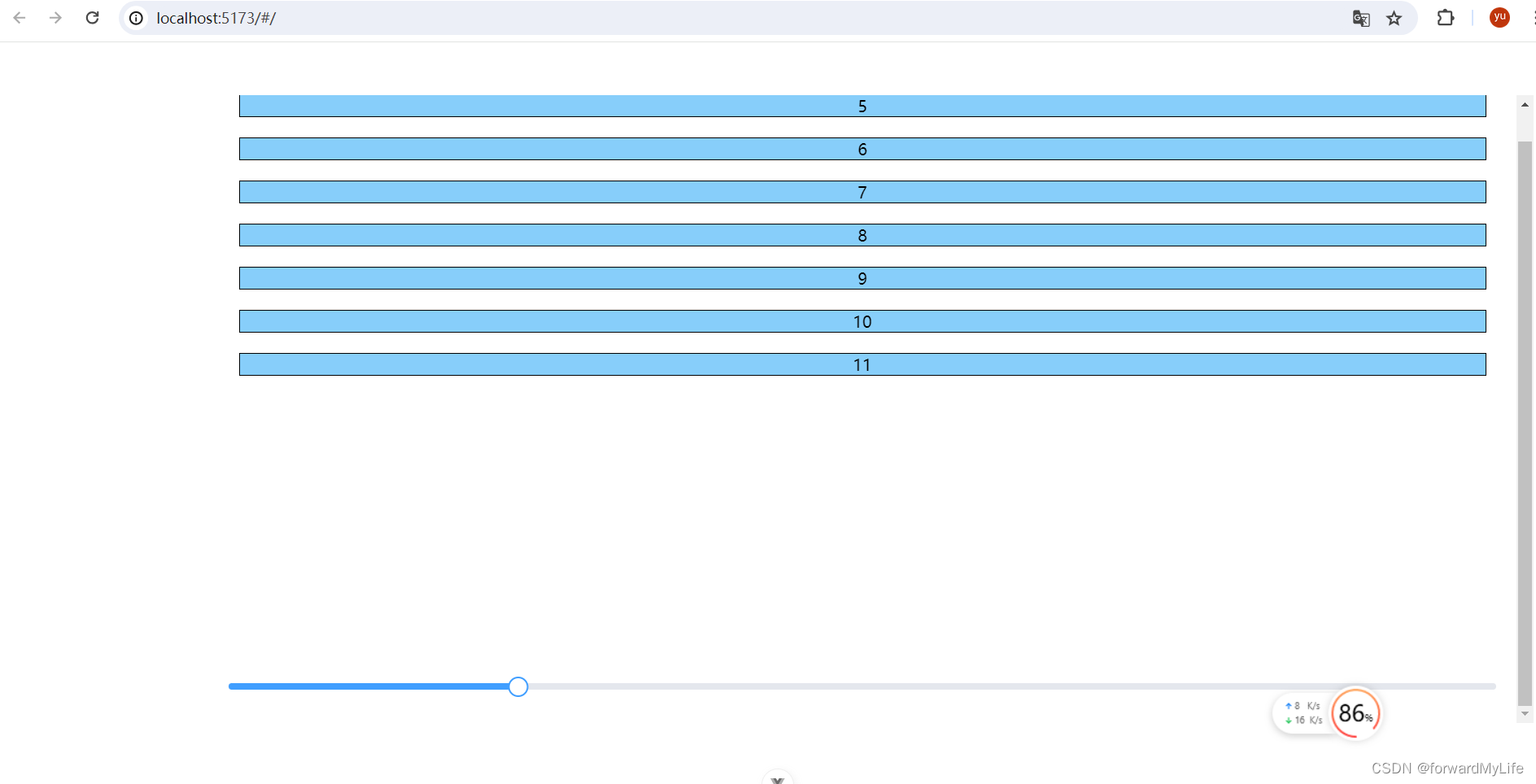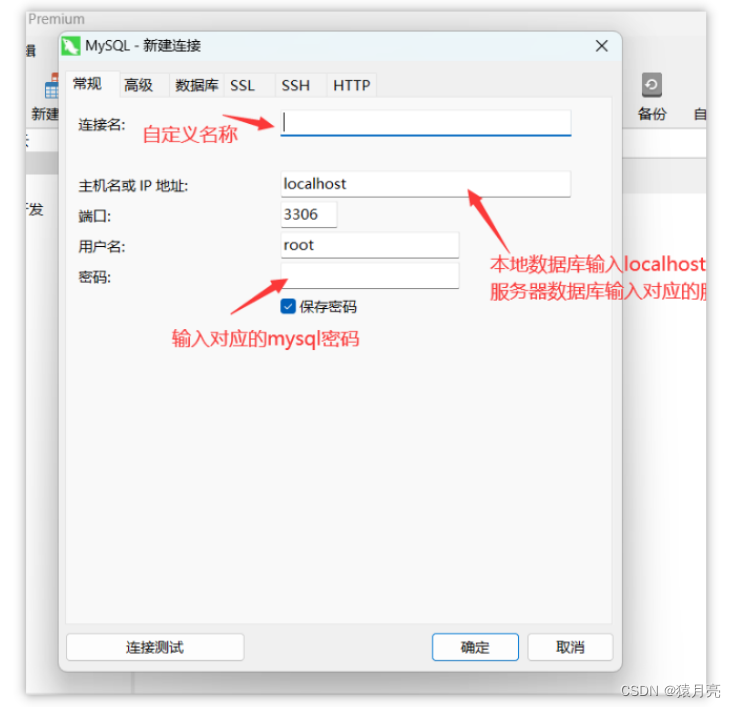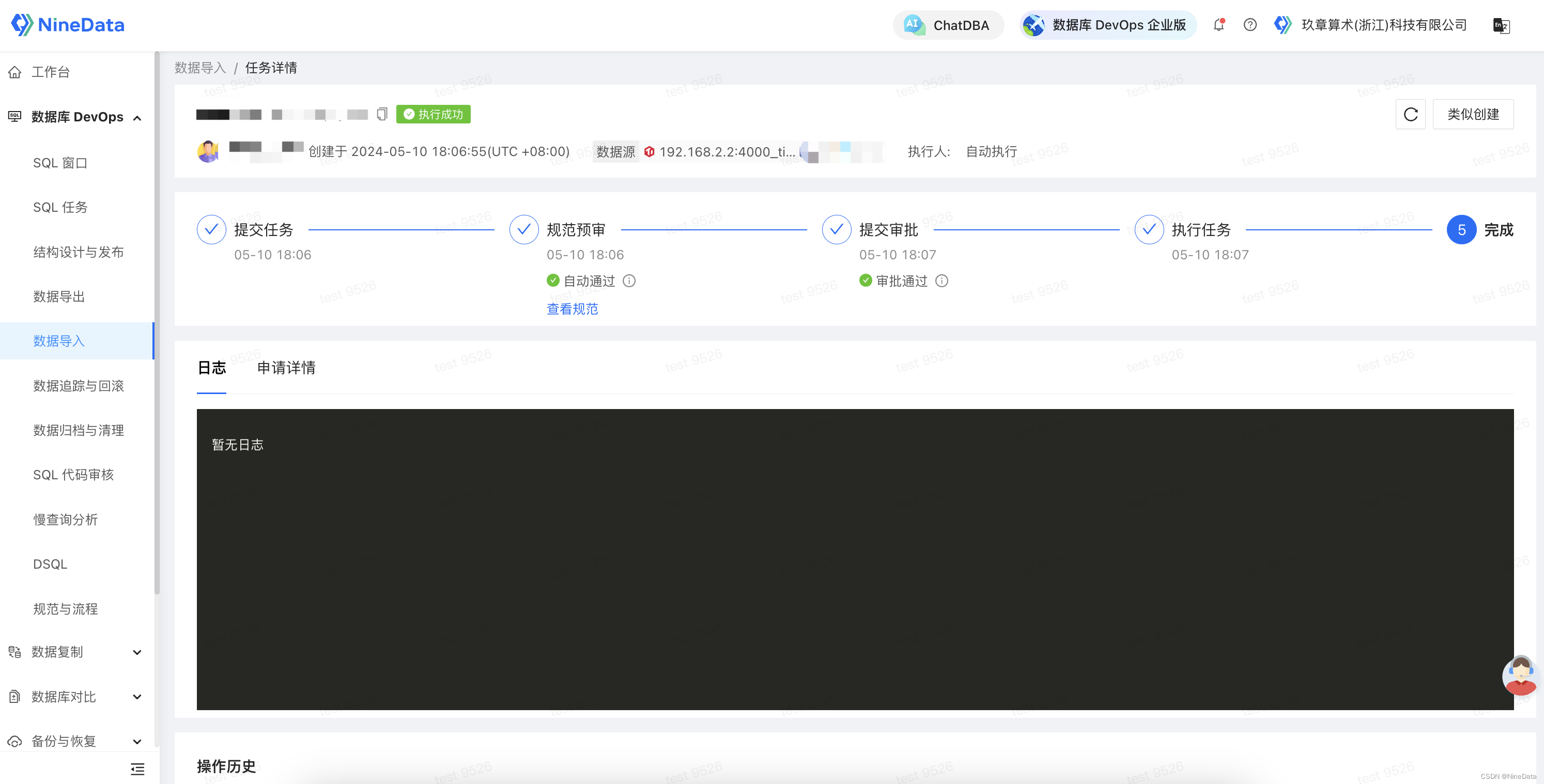头文件:
xvideoview.h
#ifndef XVIDEO_VIEW_H
#define XVIDEO_VIEW_H
#include <mutex>
#include <fstream>
struct AVFrame;
void MSleep(unsigned int ms);
//获取当前时间戳 毫秒
long long NowMs();
/// 视频渲染接口类
/// 隐藏SDL实现
/// 渲染方案可替代
// 线程安全
class XVideoView
{
public:
enum Format //枚举的值和ffmpeg中一致
{
YUV420P = 0,
NV12 = 23,
ARGB = 25,
RGBA = 26,
BGRA = 28
};
enum RenderType
{
SDL = 0
};
static XVideoView* Create(RenderType type = SDL);
/// 初始化渲染窗口 线程安全 可多次调用
/// @para w 窗口宽度
/// @para h 窗口高度
/// @para fmt 绘制的像素格式
/// @para win_id 窗口句柄,如果为空,创建新窗口
/// @return 是否创建成功
virtual bool Init(int w, int h,
Format fmt = RGBA) = 0;
//清理所有申请的资源,包括关闭窗口
virtual void Close() = 0;
//处理窗口退出事件
virtual bool IsExit() = 0;
//
/// 渲染图像 线程安全
///@para data 渲染的二进制数据
///@para linesize 一行数据的字节数,对于YUV420P就是Y一行字节数
/// linesize<=0 就根据宽度和像素格式自动算出大小
/// @return 渲染是否成功
virtual bool Draw(const unsigned char* data, int linesize = 0) = 0;
virtual bool Draw(
const unsigned char* y, int y_pitch,
const unsigned char* u, int u_pitch,
const unsigned char* v, int v_pitch
) = 0;
//显示缩放
void Scale(int w, int h)
{
scale_w_ = w;
scale_h_ = h;
}
bool DrawFrame(AVFrame* frame);
int render_fps() { return render_fps_; }
//打开文件
bool Open(std::string filepath);
//
/// 读取一帧数据,并维护AVFrame空间
/// 每次调用会覆盖上一次数据
AVFrame* Read();
void set_win_id(void* win) { win_id_ = win; }
virtual ~XVideoView();
protected:
void* win_id_ = nullptr; //窗口句柄
int render_fps_ = 0; //显示帧率
int width_ = 0; //材质宽高
int height_ = 0;
Format fmt_ = RGBA; //像素格式
std::mutex mtx_; //确保线程安全
int scale_w_ = 0; //显示大小
int scale_h_ = 0;
long long beg_ms_ = 0; //计时开始时间
int count_ = 0; //统计显示次数
unsigned char* cache_ = nullptr;//用于复制NV12缓冲
private:
std::ifstream ifs_;
AVFrame* frame_ = nullptr;
};
#endif
xsdl.h
#pragma once
#include "xvideoview.h"
struct SDL_Window;
struct SDL_Renderer;
struct SDL_Texture;
class XSDL :public XVideoView
{
public:
void Close() override;
/// 初始化渲染窗口 线程安全
/// @para w 窗口宽度
/// @para h 窗口高度
/// @para fmt 绘制的像素格式
/// @para win_id 窗口句柄,如果为空,创建新窗口
/// @return 是否创建成功
bool Init(int w, int h,
Format fmt = RGBA) override;
//
/// 渲染图像 线程安全
///@para data 渲染的二进制数据
///@para linesize 一行数据的字节数,对于YUV420P就是Y一行字节数
/// linesize<=0 就根据宽度和像素格式自动算出大小
/// @return 渲染是否成功
bool Draw(const unsigned char* data,
int linesize = 0) override;
bool Draw(
const unsigned char* y, int y_pitch,
const unsigned char* u, int u_pitch,
const unsigned char* v, int v_pitch
) override;
bool IsExit() override;
private:
SDL_Window* win_ = nullptr;
SDL_Renderer* render_ = nullptr;
SDL_Texture* texture_ = nullptr;
};
源文件:
xvideoview.cpp
#include "xsdl.h"
#include <thread>
#include <iostream>
using namespace std;
extern "C"
{
#include <libavcodec/avcodec.h>
}
#pragma comment(lib,"avutil.lib")
void MSleep(unsigned int ms)
{
auto beg = clock();
for (int i = 0; i < ms; i++)
{
this_thread::sleep_for(1ms);
if ((clock() - beg) / (CLOCKS_PER_SEC / 1000) >= ms)
break;
}
}
long long NowMs()
{
return clock() / (CLOCKS_PER_SEC / 1000);
}
AVFrame* XVideoView::Read()
{
if (width_ <= 0 || height_ <= 0 || !ifs_)return NULL;
//AVFrame空间已经申请,如果参数发生变化,需要释放空间
if (frame_)
{
if (frame_->width != width_
|| frame_->height != height_
|| frame_->format != fmt_)
{
//释放AVFrame对象空间,和buf引用计数减一
av_frame_free(&frame_);
}
}
if (!frame_)
{
//分配对象空间和像素空间
frame_ = av_frame_alloc();
frame_->width = width_;
frame_->height = height_;
frame_->format = fmt_;
frame_->linesize[0] = width_ * 4;
if (frame_->format == AV_PIX_FMT_YUV420P)
{
frame_->linesize[0] = width_; // Y
frame_->linesize[1] = width_ / 2;//U
frame_->linesize[2] = width_ / 2;//V
}
//生成AVFrame空间,使用默认对齐
auto re = av_frame_get_buffer(frame_, 0);
if (re != 0)
{
char buf[1024] = { 0 };
av_strerror(re, buf, sizeof(buf) - 1);
cout << buf << endl;
av_frame_free(&frame_);
return NULL;
}
}
if (!frame_)return NULL;
//读取一帧数据
if (frame_->format == AV_PIX_FMT_YUV420P)
{
ifs_.read((char*)frame_->data[0],
frame_->linesize[0] * height_); //Y
ifs_.read((char*)frame_->data[1],
frame_->linesize[1] * height_ / 2); //U
ifs_.read((char*)frame_->data[2],
frame_->linesize[2] * height_ / 2); //V
}
else //RGBA ARGB BGRA 32
{
ifs_.read((char*)frame_->data[0], frame_->linesize[0] * height_);
}
if (ifs_.gcount() == 0)
return NULL;
return frame_;
}
//打开文件
bool XVideoView::Open(std::string filepath)
{
if (ifs_.is_open())
{
ifs_.close();
}
ifs_.open(filepath, ios::binary);
return ifs_.is_open();
}
XVideoView* XVideoView::Create(RenderType type)
{
switch (type)
{
case XVideoView::SDL:
return new XSDL();
break;
default:
break;
}
return nullptr;
}
XVideoView::~XVideoView()
{
if (cache_)
delete cache_;
cache_ = nullptr;
}
bool XVideoView::DrawFrame(AVFrame* frame)
{
if (!frame || !frame->data[0])return false;
count_++;
if (beg_ms_ <= 0)
{
beg_ms_ = clock();
}
//计算显示帧率
else if ((clock() - beg_ms_) / (CLOCKS_PER_SEC / 1000) >= 1000) //一秒计算一次fps
{
render_fps_ = count_;
count_ = 0;
beg_ms_ = clock();
}
int linesize = 0;
switch (frame->format)
{
case AV_PIX_FMT_YUV420P:
return Draw(frame->data[0], frame->linesize[0],//Y
frame->data[1], frame->linesize[1], //U
frame->data[2], frame->linesize[2] //V
);
case AV_PIX_FMT_NV12:
if (!cache_)
{
cache_ = new unsigned char[4096 * 2160 * 1.5];
}
linesize = frame->width;
if (frame->linesize[0] == frame->width)
{
memcpy(cache_, frame->data[0], frame->linesize[0] * frame->height); //Y
memcpy(cache_ + frame->linesize[0] * frame->height, frame->data[1], frame->linesize[1] * frame->height / 2); //UV
}
else //逐行复制
{
for (int i = 0; i < frame->height; i++) //Y
{
memcpy(cache_ + i * frame->width,
frame->data[0] + i * frame->linesize[0],
frame->width
);
}
for (int i = 0; i < frame->height / 2; i++) //UV
{
auto p = cache_ + frame->height * frame->width;// 移位Y
memcpy(p + i * frame->width,
frame->data[1] + i * frame->linesize[1],
frame->width
);
}
}
//frame->data[0] + frame->data[1]
return Draw(cache_, linesize);
case AV_PIX_FMT_BGRA:
case AV_PIX_FMT_ARGB:
case AV_PIX_FMT_RGBA:
return Draw(frame->data[0], frame->linesize[0]);
default:
break;
}
return false;
}
xsdl.cpp
#include "xsdl.h"
#include "sdl/SDL.h"
#include <iostream>
using namespace std;
#pragma comment(lib,"SDL2.lib")
static bool InitVideo()
{
static bool is_first = true;
static mutex mux;
unique_lock<mutex> sdl_lock(mux);
if (!is_first)return true;
is_first = false;
if (SDL_Init(SDL_INIT_VIDEO))
{
cout << SDL_GetError() << endl;
return false;
}
//设定缩放算法,解决锯齿问题,线性插值算法
SDL_SetHint(SDL_HINT_RENDER_SCALE_QUALITY, "1");
return true;
}
bool XSDL::IsExit()
{
SDL_Event ev;
SDL_WaitEventTimeout(&ev, 1);
if (ev.type == SDL_QUIT)
return true;
return false;
}
void XSDL::Close()
{
//确保线程安全
unique_lock<mutex> sdl_lock(mtx_);
if (texture_)
{
SDL_DestroyTexture(texture_);
texture_ = nullptr;
}
if (render_)
{
SDL_DestroyRenderer(render_);
render_ = nullptr;
}
if (win_)
{
SDL_DestroyWindow(win_);
win_ = nullptr;
}
}
bool XSDL::Init(int w, int h, Format fmt)
{
if (w <= 0 || h <= 0)return false;
//初始化SDL 视频库
InitVideo();
//确保线程安全
unique_lock<mutex> sdl_lock(mtx_);
width_ = w;
height_ = h;
fmt_ = fmt;
if (texture_)
SDL_DestroyTexture(texture_);
if (render_)
SDL_DestroyRenderer(render_);
///1 创建窗口
if (!win_)
{
if (!win_id_)
{
//新建窗口
win_ = SDL_CreateWindow("",
SDL_WINDOWPOS_UNDEFINED,
SDL_WINDOWPOS_UNDEFINED,
w, h, SDL_WINDOW_OPENGL | SDL_WINDOW_RESIZABLE
);
}
else
{
//渲染到控件窗口
win_ = SDL_CreateWindowFrom(win_id_);
}
}
if (!win_)
{
cerr << SDL_GetError() << endl;
return false;
}
/// 2 创建渲染器
render_ = SDL_CreateRenderer(win_, -1, SDL_RENDERER_ACCELERATED);
if (!render_)
{
cerr << SDL_GetError() << endl;
return false;
}
//创建材质 (显存)
unsigned int sdl_fmt = SDL_PIXELFORMAT_RGBA8888;
switch (fmt)
{
case XVideoView::RGBA:
sdl_fmt = SDL_PIXELFORMAT_RGBA32;
break;
case XVideoView::BGRA:
sdl_fmt = SDL_PIXELFORMAT_BGRA32;
break;
case XVideoView::ARGB:
sdl_fmt = SDL_PIXELFORMAT_ARGB32;
break;
case XVideoView::YUV420P:
sdl_fmt = SDL_PIXELFORMAT_IYUV;
break;
case XVideoView::NV12:
sdl_fmt = SDL_PIXELFORMAT_NV12;
break;
default:
break;
}
texture_ = SDL_CreateTexture(render_,
sdl_fmt, //像素格式
SDL_TEXTUREACCESS_STREAMING, //频繁修改的渲染(带锁)
w, h //材质大小
);
if (!texture_)
{
cerr << SDL_GetError() << endl;
return false;
}
return true;
}
bool XSDL::Draw(
const unsigned char* y, int y_pitch,
const unsigned char* u, int u_pitch,
const unsigned char* v, int v_pitch
)
{
//参数检查
if (!y || !u || !v)return false;
unique_lock<mutex> sdl_lock(mtx_);
if (!texture_ || !render_ || !win_ || width_ <= 0 || height_ <= 0)
return false;
//复制内存到显显存
auto re = SDL_UpdateYUVTexture(texture_,
NULL,
y, y_pitch,
u, u_pitch,
v, v_pitch);
if (re != 0)
{
cout << SDL_GetError() << endl;
return false;
}
//清空屏幕
SDL_RenderClear(render_);
//材质复制到渲染器
SDL_Rect rect;
SDL_Rect* prect = nullptr;
if (scale_w_ > 0) //用户手动设置缩放
{
rect.x = 0; rect.y = 0;
rect.w = scale_w_;//渲染的宽高,可缩放
rect.h = scale_w_;
prect = ▭
}
re = SDL_RenderCopy(render_, texture_, NULL, prect);
if (re != 0)
{
cout << SDL_GetError() << endl;
return false;
}
SDL_RenderPresent(render_);
return true;
}
bool XSDL::Draw(const unsigned char* data, int linesize)
{
if (!data)return false;
unique_lock<mutex> sdl_lock(mtx_);
if (!texture_ || !render_ || !win_ || width_ <= 0 || height_ <= 0)
return false;
if (linesize <= 0)
{
switch (fmt_)
{
case XVideoView::RGBA:
case XVideoView::ARGB:
linesize = width_ * 4;
break;
case XVideoView::YUV420P:
linesize = width_;
break;
default:
break;
}
}
if (linesize <= 0)
return false;
//复制内存到显显存
auto re = SDL_UpdateTexture(texture_, NULL, data, linesize);
if (re != 0)
{
cout << SDL_GetError() << endl;
return false;
}
//清空屏幕
SDL_RenderClear(render_);
//材质复制到渲染器
SDL_Rect rect;
SDL_Rect* prect = nullptr;
if (scale_w_ > 0) //用户手动设置缩放
{
rect.x = 0; rect.y = 0;
rect.w = scale_w_;//渲染的宽高,可缩放
rect.h = scale_w_;
prect = ▭
}
re = SDL_RenderCopy(render_, texture_, NULL, prect);
if (re != 0)
{
cout << SDL_GetError() << endl;
return false;
}
SDL_RenderPresent(render_);
return true;
}
main.cpp
#include <iostream>
#include <fstream>
#include<string>
#include"xsdl.h"
using namespace std;
extern "C" { //指定函数是c语言函数,函数名不包含重载标注
//引用ffmpeg头文件
#include <libavcodec/avcodec.h>
#include <libavutil/opt.h>
}
//预处理指令导入库
#pragma comment(lib,"avcodec.lib")
#pragma comment(lib,"avutil.lib")
int main(int argc, char* argv[])
{
auto view = XVideoView::Create();
//1 分割h264 存入AVPacket
// ffmpeg -i v1080.mp4 -s 400x300 test.h264
string filename = "test.h264";
ifstream ifs(filename, ios::binary);
if (!ifs)return -1;
unsigned char inbuf[4096] = { 0 };//用于存储h264编码流
AVCodecID codec_id = AV_CODEC_ID_H264;
//1 找解码器
auto codec = avcodec_find_decoder(codec_id);
//2 创建解码器上下文
AVCodecContext *c = avcodec_alloc_context3(codec);
//硬件加速格式 DXVA2
AVHWDeviceType hw_type = AV_HWDEVICE_TYPE_DXVA2;
/// 打印所有支持的硬件加速方式
for (int i = 0;; i++)
{
//const AVCodecHWConfig *avcodec_get_hw_config(const AVCodec *codec, int index);
//用于获取指定编解码器的硬件加速配置。
//index: 硬件配置的索引值,从 0 开始递增。用于遍历所有可用的硬件配置。
const AVCodecHWConfig *config = avcodec_get_hw_config(codec, i);
if (!config)break;
if (config->device_type)
//const char *av_hwdevice_get_type_name(enum AVHWDeviceType type);
//该函数接收一个 AVHWDeviceType 类型的参数,并返回一个描述该硬件设备类型的字符串指针
//如 CUDA、DXVA2、VAAPI 等。
cout << av_hwdevice_get_type_name(config->device_type) << endl;
}
//初始化硬件加速器上下文
AVBufferRef* hw_ctx = nullptr;
av_hwdevice_ctx_create(&hw_ctx, hw_type, NULL, NULL, 0);
//设定硬件GPU加速
c->hw_device_ctx = av_buffer_ref(hw_ctx);//把硬件加速器上下文引用赋值给解码器上下文,以便在后续的编码或解码操作中利用硬件加速功能
c->thread_count = 16;
//3 打开编码器上下文
avcodec_open2(c, NULL, NULL);
//分割上下文
AVCodecParserContext* parser = av_parser_init(codec_id);
AVPacket* pkt = av_packet_alloc();
AVFrame* frame = av_frame_alloc();
AVFrame* hw_frame = av_frame_alloc(); //硬解码转换用这个frame
long long begin = NowMs();
int count = 0;//解码统计
bool is_init_win = false;
while (!ifs.eof())
{
ifs.read((char*)inbuf, sizeof(inbuf));//将h264编码的流读入inbuf中,一次读4096
int data_size = ifs.gcount();// 返回上一次读取操作实际读取的字符数,并用data_size记录
if (data_size <= 0)break;
//检查输入流是否已经到达文件末尾(EOF,End Of File)
if (ifs.eof())
{
ifs.clear();
ifs.seekg(0, ios::beg);//回到文件开头重复读取
}
auto data = inbuf;//data和inbuf指向同一片区域
while (data_size > 0) //一次有多帧数据
{
//通过0001 截断输出到AVPacket 返回帧大小
int ret = av_parser_parse2(parser, c,
&pkt->data, &pkt->size, //截断后输出到AVpacket的data中
data, data_size, //h264编码流,待处理数据
AV_NOPTS_VALUE, AV_NOPTS_VALUE, 0
);//返回消耗的输入数据字节数ret。如果所有输入数据都被消耗,则返回值等于 buf_size。如果解析过程中出现错误,则返回负数。
data += ret;//data指针向前移动 ret个字节,继续处理inbuf未处理的数据
data_size -= ret; //待处理的数据大小
if (pkt->size)//如果还有截断后的avpacket流则进行解码操作
{
//cout << pkt->size << " "<<flush;
//发送packet到解码线程
ret = avcodec_send_packet(c, pkt);//把avpacket给解码器进行解码
if (ret < 0)
break;
//获取多帧解码数据
while (ret >= 0)//如果解码成功
{
//每次回调用av_frame_unref
ret = avcodec_receive_frame(c, frame);//拿到解码后的数据存储到frame中
if (ret < 0)
break;
auto pframe = frame; //为了同时支持硬解码和软解码
if (c->hw_device_ctx) //硬解码
{
//硬解码转换GPU =》CPU ,显存=》内存
//AV_PIX_FMT_NV12, ///< planar YUV 4:2:0, 12bpp, 1 plane for Y and 1 plane for the UV components, which are interleaved (first byte U and the following byte V)
av_hwframe_transfer_data(hw_frame, frame, 0);
pframe = hw_frame;//如果是硬解码则pframe = hw_frame
}
//AV_PIX_FMT_DXVA2_VLD
AV_PIX_FMT_DXVA2_VLD;
cout << frame->format << " " << flush;
//
/// 第一帧初始化窗口
if (!is_init_win)
{
is_init_win = true;
view->Init(pframe->width, pframe->height, (XVideoView::Format)pframe->format);
}
view->DrawFrame(pframe);
count++;
auto cur = NowMs();
if (cur - begin >= 1000)// 1秒钟计算一次
{
cout << "\nfps = " << count << endl;
count = 0;
begin = cur;
}
}
}
}
}
///取出缓存数据,防止丢帧
int ret = avcodec_send_packet(c, NULL);
while (ret >= 0)
{
ret = avcodec_receive_frame(c, frame);
if (ret < 0)
break;
cout << frame->format << "-" << flush;
}
av_parser_close(parser);
avcodec_free_context(&c);
av_frame_free(&frame);
av_packet_free(&pkt);
getchar();
return 0;
}
运行结果:
